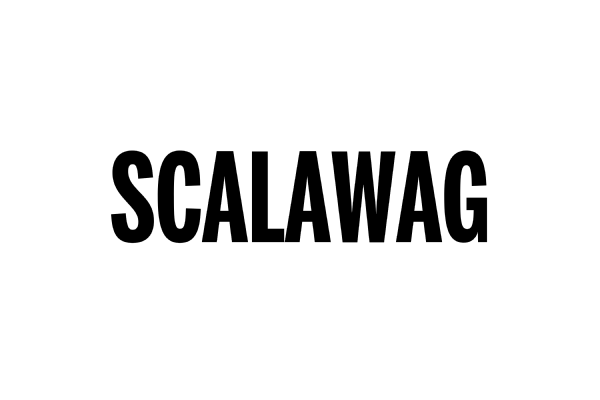

The Newspack Case Study is an ongoing series highlighting the best practices of publishers who use Newspack’s Platform for News—a suite of tools designed to drive editorial excellence and business success.
The Case: Since launching with a crowdfunding campaign in 2015, Scalawag has gone through a variety of iterations and ownership. The former quarterly print magazine is now a digital-first website, it traded a subscription model for membership revenue, and its co-founders have stepped aside. Through it all, though, Scalawag’s vision has remained clear: to create a more liberated South through community-driven storytelling. Scalawag prides itself as a place that creates pathways to careers in journalism, literature and the arts for people who may have not had access otherwise.
The Stats
- Average number of story pitches a month: 30
- Pay range per story: $500 minimum for essays and lists, up to $1,200 for big investigative pieces
- Breakdown of stories written by contributors versus Scalawag staff: 80% freelancers, 20% editors
The Backstory
Lovey Cooper has worked longer at Scalawag than anywhere else in her career. In 2017, she began as an editorial fellow — “one of the first paid positions at Scalawag.” Today, at 28 years old, she’s Scalawag’s managing editor, assisting the team in curating, soliciting, editing, and producing written and multimedia content for the site.
“I was attracted to the mission and the opportunity to write about anything that had to do with the South, where I’m from and where I live now,” she said.
Scalawag’s mission is a noble one. According to the mission statement on its About page, “Scalawag works in solidarity with oppressed communities in the South to disrupt and shift the narratives that keep power and wealth in the hands of the few. Collectively, we pursue a more liberated South.”
It’s a mission that Cooper and the rest of the Scalawag staff take seriously, which is why they excel at giving marginalized communities an opportunity to be heard. Cooper, like all of Scalawag’s editors, spends a significant amount of time working with freelancers. Although she’s proud of all of them, she has a particular soft spot for her work with Lyle C. May, who has been on death row in North Carolina for more than 20 years. In the past five years, Cooper said, May has built an impressive writing career.
May’s first journalistic pieces were published in Scalawag and, according to Cooper, he’s since “gone on to graduate college, win awards and fellowships, and present to universities — all via snail mail and a shoddy payphone in prison.” He even recently got a book deal. Cooper, who connects weekly with May by phone, shared that he continues to write for Scalawag and helped significantly with their Press in Prison project, a “practical, abolitionist guidebook for journalists.”
Cooper said that working with people such as May, who might not otherwise have an opportunity to be published as easily in larger outlets, is a huge asset for Scalawag. “Objectivity is bullshit, and an asset of working with people who are community members first is that they haven’t been conditioned to see things from a non-material viewpoint,” she explained. “For other readers who are directly affected by something we cover in a story, these writers know how important it is to talk in terms and language that their neighbors actually use.”
The Takeaways
How does Scalawag do it? Cooper offered three tips that make Scalawag’s community-first approach work.
1. Solicit fresh perspectives
Scalawag’s submission page is easy to find and straightforward. It explains what they’re looking for, under which topic areas — arts and soul, race and place, or Southern politics. Embedded at the bottom of that page is a pitch form, where potential writers can share their submissions.
Of the five or so stories that Scalawag publishes each month, the vast majority (80%, Cooper estimates) are written by freelancers.
“We get a lot of pitches, especially since we’ve upped our pay rates for contributors,” she explained. On average, Scalawag pays between $500 for shorter pieces like personal essays and up to $1,200 for longer investigative pieces.
Cooper said the most important factor in getting pitches, especially from newer writers, has always been the same: word of mouth. Many times, Scalawag staff works with writers to publish “their first-ever actual reported piece,” and those writers go on to tell their friends about the experience.
“Something we pay attention to with each pitch is whether this is the person to be telling this story,” Cooper explained. “We have to ask ourselves, are we interested in this story just because we’ve never heard of it before, or are we interested in it because of the person’s relationship and proximity to the issue they’re talking about?”
Sometimes that means that, despite a strong story idea, Cooper has to turn down writers. And sometimes it means working with less experienced writers, who might require more help to report a journalistic piece.
“It can sometimes require a lot of hand-holding,” she said. “But it’s worth it to find the right person to tell the story.”
2. Be active within your community.
Cooper describes Scalawag’s focus — about the South, and particularly the progressive South — as “a niche within a niche.” In order to effectively report on that niche, she believes wholeheartedly in being involved in the community.
“Becoming an ally to the communities that you genuinely have an interest in is so important,” she said. “We’ve spent a lot of time building up our reputation in a lot of these spaces.”
Part of the way the Scalawag achieves this is through their events, either celebratory gatherings, which are opportunities for readers to meet staff members face to face, or topic-based forums, on issues like environmental justice. Pre-pandemic, Scalawag hosted events in cities across the South, including ??Durham, North Carolina; Birmingham, Alabama; and Atlanta. Since COVID, they’ve hosted events virtually.
Another way Scalawag builds trust is by hiring people who are actively involved in the communities they cover. “We’re personally inserted into the narrative,” Cooper said. “That’s something that traditional journalism frowns upon, but for us, it’s essential to getting things done right, and in a way that feels really good.”
3. Know your strengths (and your weaknesses).
There’s no shortage of people at Scalawag with big ideas. In fact, brainstorming is so prolific that staff members are now asked to fill out a worksheet for each new project proposal.
Cooper said the worksheet was born from trial and error. “Otherwise, every week we’ll just be like, ‘What if we did this cool new thing?’ and then everybody gets on board, and then we try to do too many new projects at once and burn out.”
The worksheets ask questions such as who will be involved in the project, how much time it will take, whether it can be monetized, and whether it requires a partner organization. It’s just one of many ways that Scalawag’s scrappy team is trying to “professionalize” their work processes, Cooper said.
“At Scalawag, every one of us has a lot of energy in the ideation phase, and we’re always working on getting better at consistent followthrough.”





